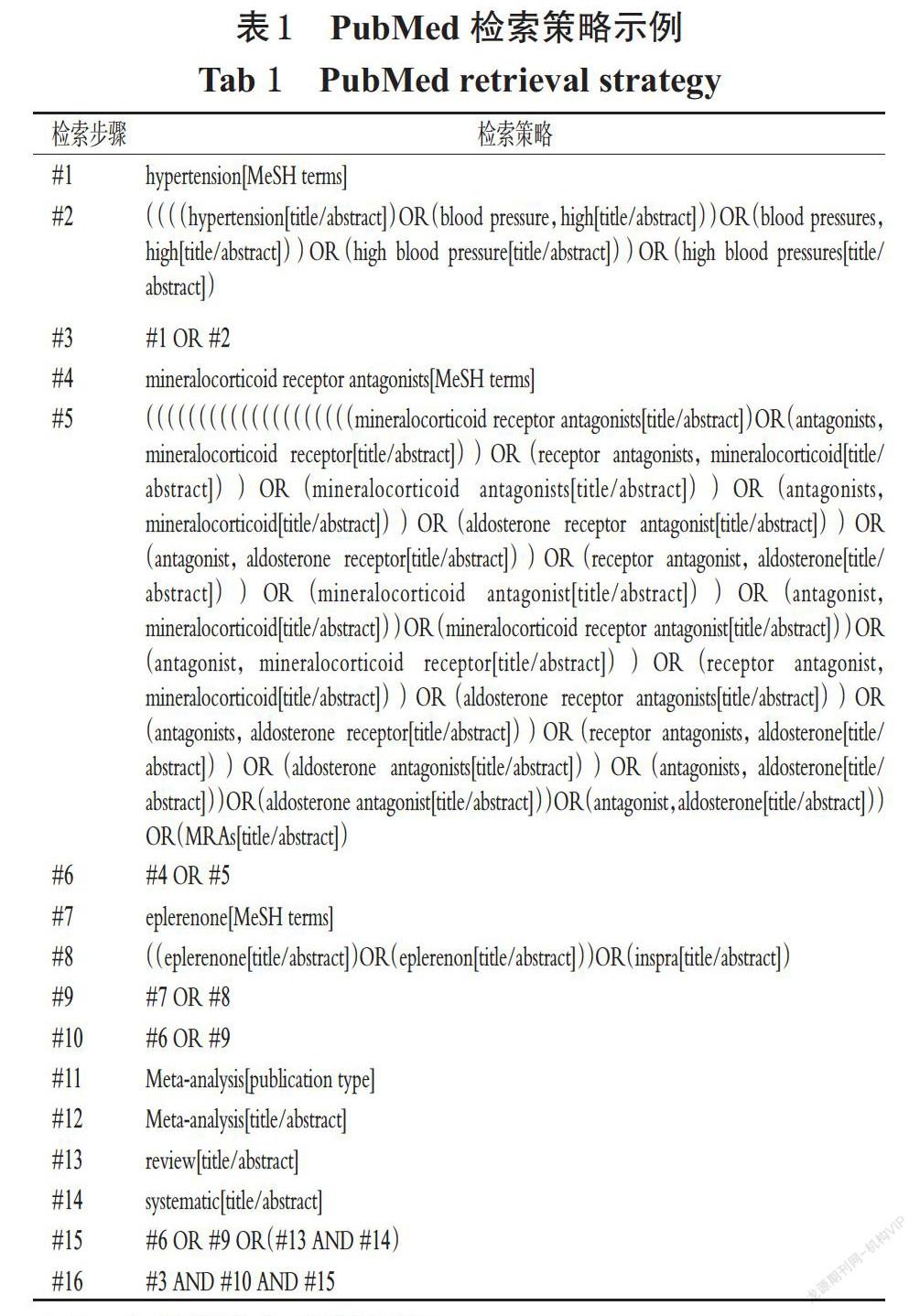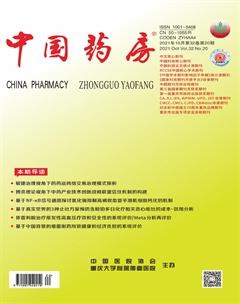依普利酮治疗原发性高血压疗效和安全性的系统评价/Meta分析再评价
张平 高存州 邹婧 吴爱萍



中圖分类号 R543;R972 文献标志码 A 文章编号 1001-0408(2021)20-2530-08
DOI 10.6039/j.issn.1001-0408.2021.20.16
摘 要 目的:对依普利酮治疗原发性高血压疗效和安全性的系统评价/Meta分析进行再评价。方法:计算机检索PubMed、Embase、Cochrane图书馆、Web of Science、万方数据、中国知网、维普网等,收集依普利酮治疗原发性高血压的系统评价/Meta分析,检索时限均为建库起至2021年6月24日。筛选文献并进行资料提取后,采用PRISMA声明评价纳入文献的报告质量,采用AMSTAR 2量表评价纳入文献的方法学质量,采用GRADE方法评价纳入文献结局指标的证据质量,并对纳入文献的疗效和安全性指标评价进行汇总。结果:共纳入8篇系统评价/Meta分析,其中5篇为系统评价、3篇为Meta分析,共包含73个结局指标。PRISMA评分为7.5~23.5分,其中≤15分的有6篇(75.0%),>15~<21分的有1篇(12.5%),≥21分的有1篇(12.5%)。AMSTAR 2评价结果显示,2项研究的方法学质量等级为低级,6项研究为极低级。GRADE证据质量评价结果显示,高质量指标有3个,中质量指标有24个,低或极低质量指标有46个;导致降级的因素主要为局限性、不一致性、不精确性及发表偏倚。在治疗有效性方面,与安慰剂比较,依普利酮可显著降低患者的诊室血压和24 h动态血压;其在降低诊室血压方面的效果显著优于其他降压药物或与其他降压药物相当。依普利酮降低诊室收缩压的效果不及螺内酯和依那普利,或优于钙通道阻滞剂、依那普利和血管紧张素受体拮抗剂,或与钙通道阻滞剂和依那普利相当;依普利酮降低诊室舒张压的效果不及螺内酯、钙通道阻滞剂和依那普利,或与依那普利相当,而优于血管紧张素受体拮抗剂。在安全性方面,依普利酮的不良反应、严重不良反应和高钾血症发生率与安慰剂比较差异均无统计学意义,或其不良反应发生率显著高于安慰剂;该药的不良反应、严重不良反应发生率与其他降压药物比较差异均无统计学意义。结论:依普利酮治疗原发性高血压的疗效和安全性均较好,但目前相关系统评价/Meta分析的方法学质量整体较低,且证据水平普遍为中、低或极低,可能会降低该结论的真实性与有效性,应谨慎解读。
关键词 依普利酮;原发性高血压;疗效;安全性;系统评价;Meta分析;再评价
Efficacy and Safety of Eplerenone in the Treatment of Essential Hypertension: Reevaluation of Systematic Review/Meta-analysis
ZHANG Ping,GAO Cunzhou,ZOU Jing,WU Aiping(Dept. of Basic Medicine, Guizhou College of Health Professions, Guizhou Tongren 554300, China)
ABSTRACT OBJECTIVE: To reevaluate the systematic review/Meta-analysis of efficacy and safety of eplerenone in the treatment of essential hypertension. METHODS: Retrieved from PubMed, Embase, Cochrane Library, Web of Science, Wanfang database, CNKI, VIP, systematic review/Meta-analysis about eplerenone in the treatment of essential hypertension were collected from the inception to June 24th,2021. After literature screening and data extraction, the quality of included literatures were evaluated with PRISMA statement; methodology quality of included literatures were evaluated with AMSTAR 2 scale; GRADE method was adopted to evaluate the evidence quality of outcome measures. Efficacy and safety index evaluation of included literatures were summeried. RESULTS: A total of 8 systematic reviews/Meta-analyses were included, involving 5 systematic reviews and 3 Meta-analysis, including 73 outcome indicators. PRISMA scores ranged from 7.5 to 23.5, including 6 literatures (75.0%) with≤15 points, 1 (12.5%) with >15-<21 points and 1 (12.5%) with ≥21 points. The results of AMSTAR 2 evaluation indicated that the methodological quality of 2 studies was low, and that of 6 studies was very low. GRADE quality evaluation results showed that there were 3 high quality indicators, 24 medium quality indicators and 46 low or very low quality indicators; the factors contributed to downgrading evidence quality were limitation, inconsistency, imprecision and publication bias. In terms of efficacy, compared with placebo, eplerenone could significantly reduce clinical blood pressure (CBP) and 24-hour ambulatory blood pressure (ABP). Its effect in reducing CBP was significantly better than other antihypertensive drugs or equivalent to other antihypertensive drugs. The effects of eplerenone on reducing clinical systolic blood pressure was not as good as spironolactone and enalapril, or better than calcium channel blocker, enalapril and angiotensin receptor antagonist, or equivalent to calcium channel blocker and enalapril; the effect of eplerenone on reducing clinical diastolic blood pressure was not as good as spironolactone, calcium channel blocker and enalapril, or as good as enalapril, but better than angiotensin receptor antagonist. In terms of safety, there was no significant difference in the incidence of ADR, serious ADR or hyperkalemia caused by eplerenone, compared with placebo, or the incidence of ADR was higher than that of placebo. There was no statistical significance in the incidence of ADR or serious ADR, compared with other antihypertensive drugs. CONCLUSIONS: Efficacy and safety of eplerenone in the treatment of essential hypertension was good,but in view of the poor methodological quality of systematic reviews or Meta-analysis and the low or very low level of outcome indicator evidence, the authenticity and effectiveness of the conclusion will be reduced, so that those indcaters should be interpreted carefully.

